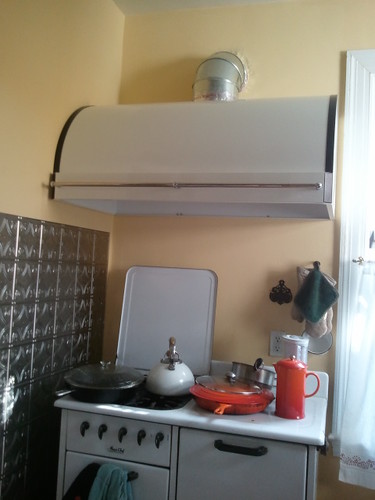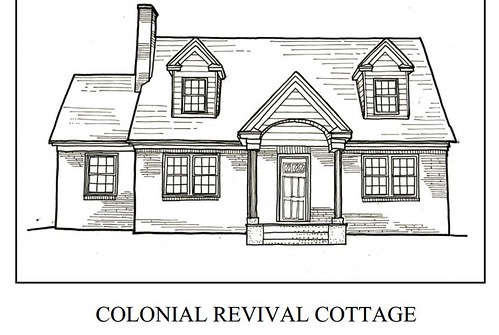May is (2018) Historic Preservation Month: 60 ways to celebrate | Part 3: Preservation at Home (34-41)
This post is updated and expanded annually, to encourage us to acknowledge and celebrate historic preservation, ideally not only during Preservation Month but throughout the year, by pointing out things that we can see and do.
In the past I've run this as one very long post, which grows each year as I add items. This year I've broken up the post into four, with each installment running on succeeding Mondays throughout May.
-- May is Historic Preservation Month: 60 ways to celebrate | Part 1: Learn; Get Involved (1-16)
-- May is Historic Preservation Month: 60 ways to celebrate | Part 2: Explore your community (17-33)
-- May is Historic Preservation Month: 60 ways to celebrate | Part 3: Preservation At Home (34-41)
-- May is Historic Preservation Month: 60 ways to celebrate | Part 4: Cultural Heritage Tourism (42-60)
=====
Historic Preservation at Home
34. If you own "an old house," and want to learn more about historically sympathetic renovation, why not subscribe to relevant magazines such as Old House Journal, Old House Interiors, American Bungalow, This Old House, Fine Homebuilding, etc.
You learn about historic architecture and details. They run features on interesting neighborhoods, places you can try to see when you travel. And the magazines offer good ideas of how to make historically appropriate changes in your own house.
Losing the interior details of historic homes in favor of newer designs, stainless steel appliances, "open concept" floorplans, etc., often reduces the historicity of a house to the equivalent of an envelope.
I hadn't been interested much in "the decorative arts" and interiors of houses all that much before, but having moved into a 1929 bungalow with a relatively intact interior, and including a 1930s Magic Chef Oven, I've become much more attuned and interested.
While I tend to prefer houses that are older, it's aimportant to acknowledge the preservation movement for houses (and buildings) of the recent past. Publications focusing on that era include Modernism, Atomic Ranch, and Midcentury Magazine from the UK.
35. Publications on maintenance of historic houses. Some historic preservation organizations publish good guides to maintaining "old houses." The Capitol Hill Restoration Society has published a number of bulletins on the architectural elements of neighborhood housing.
The Homeowner's Handbook to Historic Houses published by the Historic Macon Foundation has a chapter on "The Deterioration Cycle of Historic Homes," which explains the sub-systems (roof, exterior walls, etc.) within a house, the materials these sub-systems are constructed from, and how, with use and exposure to weather, they deteriorate. It's followed by chapters on maintenance and historic preservation incentive programs unique to Georgia.
From Bungalow Maintenance 101.
Similarly, the Historic Chicago Bungalow Association publishes Bungalow Maintenance 101. Manitoba's Heritage Building Maintenance Manual is excellent too. Rehab Rochester is out-of-print, but available via archive.org.
The State of Ohio Historic Preservation Office sponsors a program called "Building Doctor," which holds "clinics" around the state, where they provide training on maintenance issues and do evaluations of specific houses that have been prearranged by appointment. See "'Patients' receive old-home remedies" from the Cincinnati Enquirer.
The SAUGANASH WORKBOOK: A Guide for Building and Renovating in Sauganash is a community design guide for a historic neighborhood where many of the already large houses are targets for large-scale renovations and expansions. The guidebook aims to help people come up with historically empathetic renovations.
There is a series of books on bungalows by Jane , which are highly recommended. Many such books exist for the various architectural types.
 While our stove dates to the 1930s, the hood vent we installed is modern, but uses a historic design and is color matched to our white stove. The tin backsplash for the stove area is modern also.
While our stove dates to the 1930s, the hood vent we installed is modern, but uses a historic design and is color matched to our white stove. The tin backsplash for the stove area is modern also. 36. Books to guide renovation. Just as there are magazines, there are relevant books too. Too many renovations of historic houses today are being done more in tune with today's design styles, when it is possible to do renovations that respect historic character and provide a great deal of charm.
For example, we have a bungalow, and Jane Powell has authored five books on the type, with great photos by Linda Swendsen: Bungalow Bathrooms; Bungalow Kitchens; Bungalow Details: Exterior; Bungalow Details: Interior; Bungalow: The Ultimate Arts & Crafts Home.
Before we moved in, we knew we needed to do work in the bathroom and kitchen and just using Powell's books as picture books and guides, we were able to do sympathetic renovation that was congruent with the house and the original elements that still remained.
If you ever get to Winterthur Mansion in Delaware, I seem to recall that they have a great "museum bookstore" with a lot of books relevant to historic preservation and renovation.
While focused on new construction, but applying traditional approaches the books by Sarah Susanka would be great resources for renovation of existing properties also.
37. Parts and appliance resources. There are companies that specialize in "historic" parts. For example, DEA Bathroom Machineries specialize in bathrooms, especially historic sinks. There are firms that specialize in restoring ovens, and companies like Big Chill produce new refrigerator appliances that "look old." Most big cities have architectural salvage stores, for example in the DC area, it's Community Forklift. In Baltimore, Loading Dock is a non-profit while Second Chance is a for profit. Antique stores...
38. Workshops and expos. It would be logical to have "Preservation Expos" during Preservation Month but it doesn't seem to be the case. Historic Chicago Bungalow Association holds workshops most months, and has building expos too, from time to time.
Historic Kansas City holds an annual Old House Expo, but in February. Last October, DC's Capitol Hill Restoration Society sponsored a similar event.
The magazine group that includes Old House Journal sponsors conferences too, including the Historic Home Show. They used to hold "editions," around the country, I don't know if they still do so.
39. Activities for and with children. If you have children in your life, how about doing an activity with them that is architecture-preservation related?
 Many preservation organizations have produced coloring pages or books for children as well as offer educational activities, such as the Architectural Styles Coloring Book from Roanoke.
Many preservation organizations have produced coloring pages or books for children as well as offer educational activities, such as the Architectural Styles Coloring Book from Roanoke.Perhaps there are similar kinds of houses in your community and you could do a field trip to houses with similar styles, and then the child could color the pages.
-- Architecture for Young Children webpage, Pittsburgh History and Landmarks Foundation
-- Center for the Urban Built Environment
The National Park Service publishes Junior Ranger Guides on Historic Preservation and Archaeology.
40. Television programming. There are some HGTV/DIY network shows that are sympathetic to historic preservation, although the bulk of the shows are not. Even the heralded "Fixer Upper," even if they renovate vacant houses, tends to homogenize the interior of a house into a gargantuan "open concept" house with a massive kitchen.
But shows like "Rehab Attic," to some extent "Stone House Revival," and "American Rehab: Charleston" generally are pretty empathetic on historic preservation and can be a great source of ideas. Lately I've been enamored by "Restored," featuring Brett Waterman working on houses in Riverside County, California.
Obviously, "This Old House," on PBS is the grand-daddy of all shows. In my opinion, it's great for historic architecture and detailing, but the program tends to be more about supersizing houses, but doing a great job while you're doing so. And they seem to let it slide when homeowners make decisions that somewhat cavalierly rip out historic elements in favor of modernization.
41. Researching the history of your house. There are people who will research this for you, but many city libraries have usable information and even may offer seminars on how to go about this. Census records are one place, but more current records aren't accessible.
-- How to Research the History of Your House | This Old House
-- Internet Public Library: Research the History of Your House
-- Houses - The National Archives
Labels: cultural heritage/tourism, cultural planning, historic preservation, land use planning, transportation history, urban design/placemaking, urban history






0 Comments:
Post a Comment
<< Home